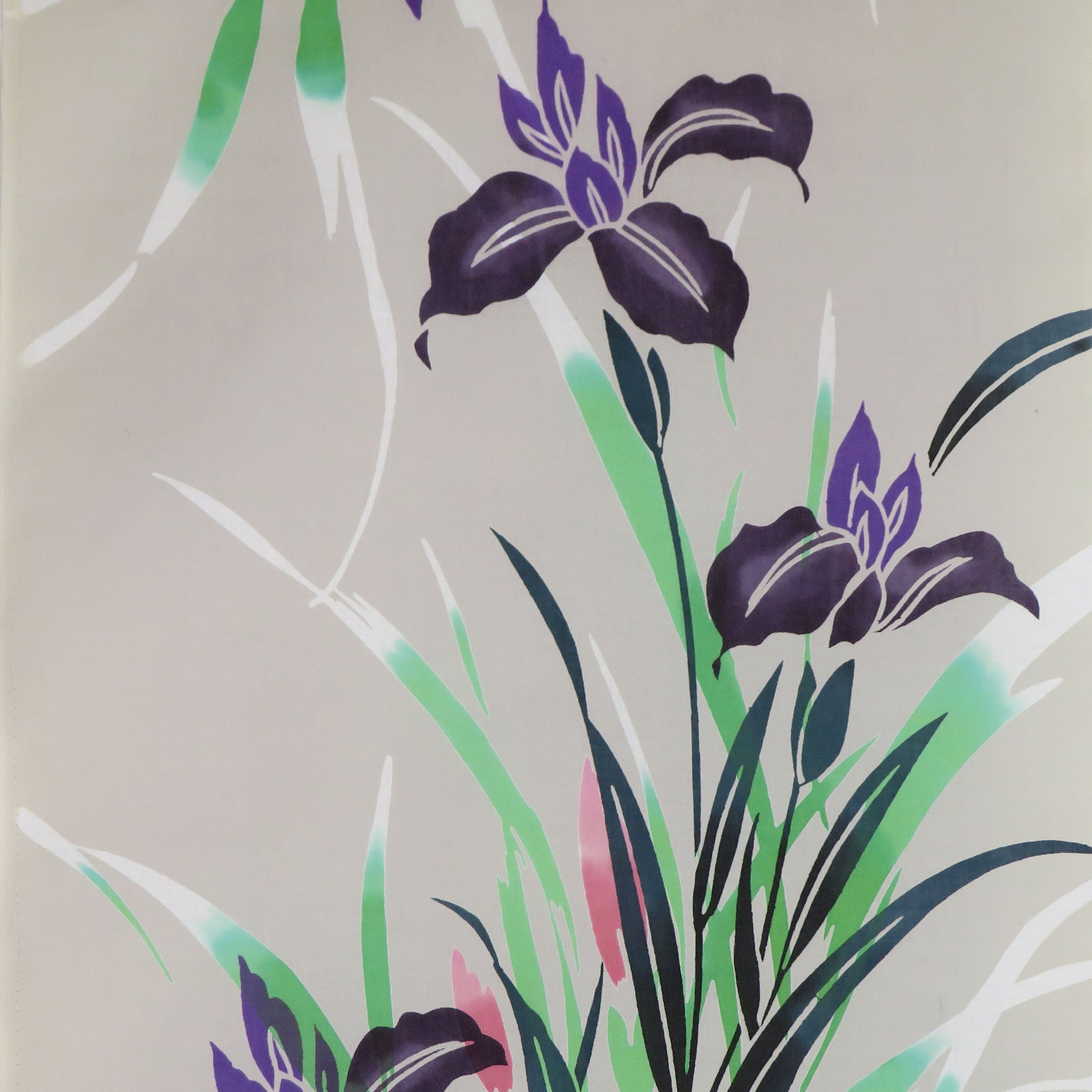By Patricia Belyea
The symbolism of flowers in Japanese culture became popular during the Heian period, over eight hundred years ago. Flowers were used to communicate secret meanings in a language known as hanakotoba.
Floral motifs are popular on yukata cottons for women. Brighter patterns are worn by young girls; duller ones by married women.
Note how the chusen-dyeing artisans add watercolor effects to the petals and leaves of flowers on yukata cottons with their masterful mixing of dye colors.
Cherry Blossom
The most popular floral symbol in Japan, the cherry blossom or sakura, relates its message of transience and imperfection as its fragile five-petalled blossoms float to the ground. Light pink or white, the cherry blossom is represented with a little notch at the end of each petal.

Chrysanthemum
Round, with ten or more narrow petals, the chrysanthemum represents longevity and power. That is why the chrysanthemum became the imperial crest and the throne of the emperor was named after it: the Chrysanthemum Throne.

Morning Glory
The Japanese name for morning glory, asagao, means a young girl’s face in the morning. With heart-shaped leaves and twirling tendrils, the morning glory represents brief love with its fleeting opening at the start of the day.

Camellia
Japanese camellias, with either single or double petals, are cultivated to produce big fluffy centers. The red camellia symbolizes perfect love. Camellias are not given to people who are sick because of the way the flowers drop suddenly from a branch.

Peony
Depicted with numerous overlapping petals in shades of red, pink, and white, the peony is the symbol of good fortune, bravery, and honor.

Hydrangea
Hydrangeas change color according to the acidity of the soil but are most often found in indigo blue. The flower of gratitude, hydrangea is a perfect present for someone who has recently done a favor for the giver.

Iris
The iris flowers with petals that rise straight up from the center are known as Bunny-Ear Iris. Flourishing in the spring, the iris represents good news, glad tidings, and loyalty.

Sunflower
Sunflowers, with their bright yellow color, mean radiance and respect. The endless fields of six-foot-high sunflowers of Oshino Village create a spectacular image with Mount Fuji in the background.

Bellflower
A star-shaped blossom, the purple-blue bellflower is often pictured with flowering clover and autumn grasses. Known as kikyo, the bellflower means endless love and honesty.
Wisteria
Most often deep purple, wisteria was historically associated with nobility as commoners were forbidden from wearing the color purple. A hanging vine of early spring, wisteria is a symbol of long life, prosperity, and good fortune.

Plum Blossom
The plum tree often blooms before the snows of winter have disappeared. The floral designs show five round petals, in red, white or pink, with long stamens. The plum blossom represents elegance and loyalty.

With the reopening of the Okan Arts Shop on April 24, Victoria and I hope that some of the luscious yukata cottons offered will speak to you!
Photos of floral yukata cottons from Okan Arts by Victoria Stone.










